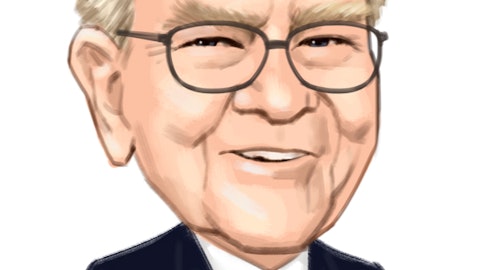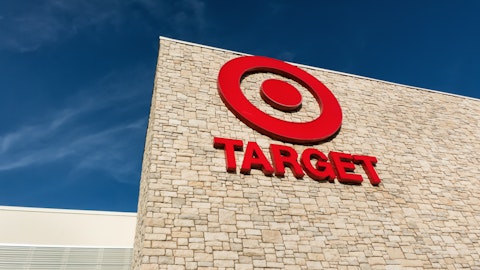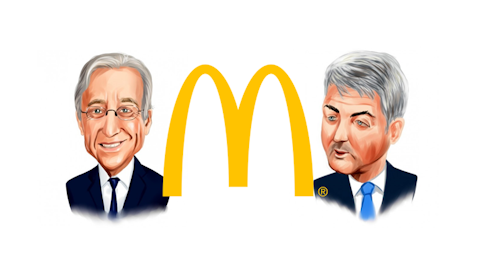Additional Possibilities: Selling Shares
This is good news in that it naturally creates a buffer for your retirement income. If you’re only taking the dividend payments, this means your wealth is likely to continue increasing through the years as well.
However, it’s also good news in that it highlights a variety of additional possibilities that are out there for reaching your retirement goals.
For instance, if you’re near retirement and do not have your desired passive income goal this does not mean that all hope is lost. Remember, if you only take the dividend component there’s a good chance that you will become richer over time. As such, that means that you could both collect dividends and decide to sell a portion of your shares to supplement your goals.
A lot of people have the ambition to never sell shares, which is a good goal. However, that doesn’t mean that this is the only way. As an illustration you could have collected all of the dividend payments from Johnson & Johnson over the last decade and sold off 2% of your shares per share, and still ended up richer than when you began.
It’s not talked about as often, but selling a percent or two of your portfolio each year doesn’t have to be an exhaustive path to zero. If you’re currently collecting a 3% dividend yield, but need 4% or 5% instead, having this sort of information in mind can be useful.
Of course you don’t need to take my word for it. Here’s a particularly interesting excerpt from Warren Buffett’s 2012 Berkshire Hathaway (BRK.A) (BRK.B) annual letter, indicating effectively the same idea:
“Let me end this math exercise – and I can hear you cheering as I put away the dentist drill – by using my own case to illustrate how a shareholder’s regular disposals of shares can be accompanied by an increased investment in his or her business. For the last seven years, I have annually given away about 4 1⁄4% of my Berkshire shares. Through this process, my original position of 712,497,000 B-equivalent shares (split-adjusted) has decreased to 528,525,623 shares. Clearly my ownership percentage of the company has significantly decreased.
Yet my investment in the business has actually increased: The book value of my current interest in Berkshire considerably exceeds the book value attributable to my holdings of seven years ago. (The actual figures are $28.2 billion for 2005 and $40.2 billion for 2012.) In other words, I now have far more money working for me at Berkshire even though my ownership of the company has materially decreased. It’s also true that my share of both Berkshire’s intrinsic business value and the company’s normal earning power is far greater than it was in 2005. Over time, I expect this accretion of value to continue – albeit in a decidedly irregular fashion – even as I now annually give away more than 4 1⁄2% of my shares (the increase having occurred because I’ve recently doubled my lifetime pledges to certain foundations).”
Selling shares in addition to collecting dividends is a very real alternative that is available to you. It may not be your first choice, but it should nonetheless be remembered as a possibility.
Follow Warren Buffett's Berkshire Hathaway
Additional Possibilities: Options & Preferred Shares
Beyond using dividends alone, or collecting dividends and selling some shares, there are other ways you can structure your retirement portfolio.
For instance, if you’re looking for an extra percent or two in annual income you could think about owning quality dividend paying stocks and simultaneously selling covered calls on your positions. While you may give up some of your upside, you can slightly or materially increase your cash flow in this manner.
If you’re looking to add a percent or two of income, you can routinely do this by agreeing to sell your shares at a 10% to 20%+ higher price. If you’re looking to double your dividend cash flow, you could agree to sell at a 0% to 10%+ higher price and accomplish this. Options are aptly named – they can provide flexibility.
Alternatively, you could think about selling cash-secured puts with funds that have not yet been allocated. In this case you can generate 1% to 10%+ annual cash flows depending on the price at which you’d be happy to own a given security.
Or beyond your typical dividend growth company and utilizing options, you could think about using preferred shares to meet your goals. The total return is apt to be lower, but your starting yield can also be materially higher. If you’re looking for a consistent 5% to 6% yield, without a concern about the capital appreciation component, this could be a good area to review.
Final Thoughts
The ability to retire with dividend paying stocks is probably broader than you first imagined.
When you’re thinking about retirement (be it with dividend paying stocks or otherwise) the most important aspect is going to be your expenses. In thinking about these regular expenditures it’s important to be cognizant of your goals and spend your limited funds only on items that truly matter to you. I can’t tell you what your expenses should be, but that’s the most essential step in the process.
From there you can start to think about how to get to your goal. Once you have your expense number in place, you can “back out” a portfolio number to get a feel for what you might need. A very quick way to do this is to multiply your annual expenses by 25, but remember that this is simply a baseline and not an absolute.
One of the best ways to think about retiring with a dividend-paying portfolio is to think about getting to the “crossover point” – the moment when your dividend income exceeds your expenses. Once this point is hit, it becomes more and more difficult to not get richer over time.
Yet even if you don’t reach this mark, it should be underscored that not all is lost. You have alternatives that can help supplement your income ranging from selling shares and utilizing call options to using put options and considering preferred shares.
All of these alternatives could reduce your total return expectation, but they could also help significantly in reaching your retirement goals. Although the process is highly individualized, the ideas of thinking about how much you will need and the different ways that you can get there are universal.
Disclosure: This article is originally published on Sure Dividend by Eli Inkrot.




